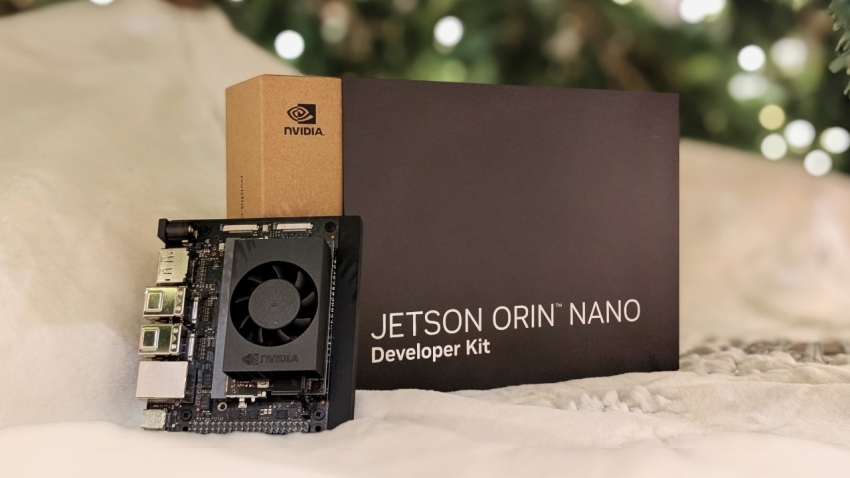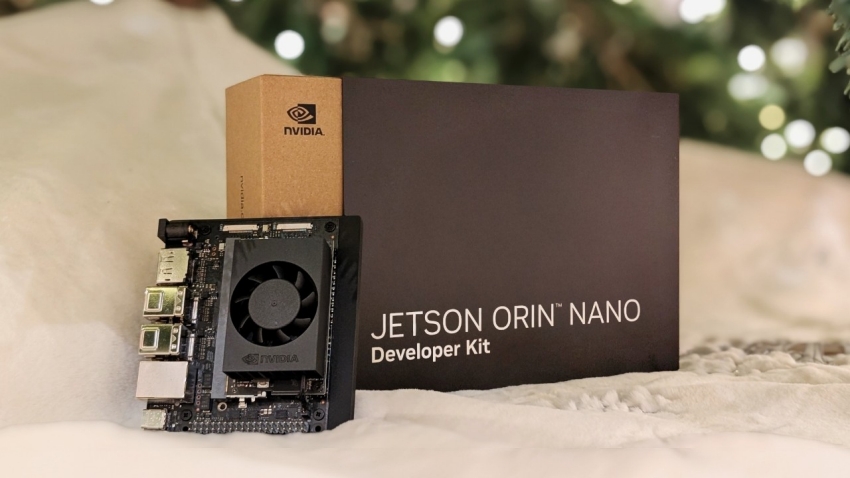
Top AI Hardware Boards in 2025
The rapid advancements in artificial intelligence (AI) require cutting-edge hardware to support complex computations and real-time inferencing. Below are the top AI hardware boards in 2025 that cater to developers and researchers across various AI applications, including robotics, edge computing, and deep learning.

NVIDIA Jetson Orin Nano Super Dev Kit designed for AI developers to build advanced robotics and IoT solutions.
1. NVIDIA Jetson AGX Orin
Description: The NVIDIA Jetson AGX Orin is a compact AI supercomputer designed for edge AI applications. Delivering up to 275 trillion operations per second (TOPS), it is ideal for robotics, autonomous systems, and high-performance AI workloads.
Key Features:
- 275 TOPS performance for advanced AI inference.
- Energy-efficient design suitable for edge deployments.
- Robust support for TensorFlow, PyTorch, and other AI frameworks.
Website: Visit NVIDIA Jetson AGX Orin
2. Google Coral Dev Board
Description: Google Coral Dev Board features the Edge TPU, offering efficient machine learning inferencing for edge AI and IoT applications. Its low power consumption and compact design make it a favorite for developers.
Key Features:
- 4 TOPS performance with Edge TPU.
- Optimized for TensorFlow Lite models.
- Compact and energy-efficient for edge deployment.
Website: Visit Google Coral Dev Board
3. Intel Neural Compute Stick 2
Description: The Intel Neural Compute Stick 2 is a USB-based AI accelerator that brings AI capabilities to edge devices. It supports deep learning inference on pre-trained models using frameworks like TensorFlow and Caffe.
Key Features:
- Plug-and-play USB accelerator for AI applications.
- Supports multiple neural network architectures.
- Ideal for rapid prototyping and edge AI development.
Website: Visit Intel Neural Compute Stick 2
4. AMD Versal AI Core
Description: The AMD Versal AI Core series combines adaptable hardware with integrated AI engines for high throughput and low latency. It’s perfect for edge AI, 5G applications, and data centers.
Key Features:
- Highly scalable architecture for diverse workloads.
- AI engines optimized for inference acceleration.
- Comprehensive software ecosystem for deployment.
Website: Visit AMD Versal AI Core
5. Myriad X VPU
Description: Intel’s Myriad X VPU delivers high-performance AI capabilities for vision-based applications. Its Neural Compute Engine provides efficient deep learning inference for edge devices.
Key Features:
- 1 TOPS performance for vision applications.
- Low power consumption for embedded systems.
- Supports TensorFlow and OpenVINO models.
Website: Visit Myriad X VPU
6. NVIDIA Jetson Nano
Description: NVIDIA Jetson Nano is an affordable and powerful AI board for beginners and hobbyists. It supports multiple neural network models and can handle image classification, object detection, and more.
Key Features:
- Compact design with 472 GFLOPS performance.
- Compatible with TensorFlow, PyTorch, and other frameworks.
- Supports a wide range of peripherals for robotics projects.
Website: Visit NVIDIA Jetson Nano
7. Raspberry Pi 5 with AI Accelerator
Description: The Raspberry Pi 5 paired with an AI accelerator offers a cost-effective solution for AI development. Its versatility and support for AI tools make it suitable for educational and hobby projects.
Key Features:
- Affordable and easy to set up.
- Compatible with TensorFlow Lite and ONNX models.
- Expandable with multiple AI accelerators.
Website: Visit Raspberry Pi
8. Xilinx Zynq UltraScale+ MPSoC
Description: Xilinx Zynq UltraScale+ MPSoC is a versatile AI platform that combines programmable logic with AI processing engines. It’s ideal for real-time analytics and edge AI.
Key Features:
- Integrated AI acceleration with FPGA flexibility.
- Real-time analytics and AI processing.
- Scalable for IoT and edge applications.
Website: Visit Xilinx Zynq UltraScale+ MPSoC



